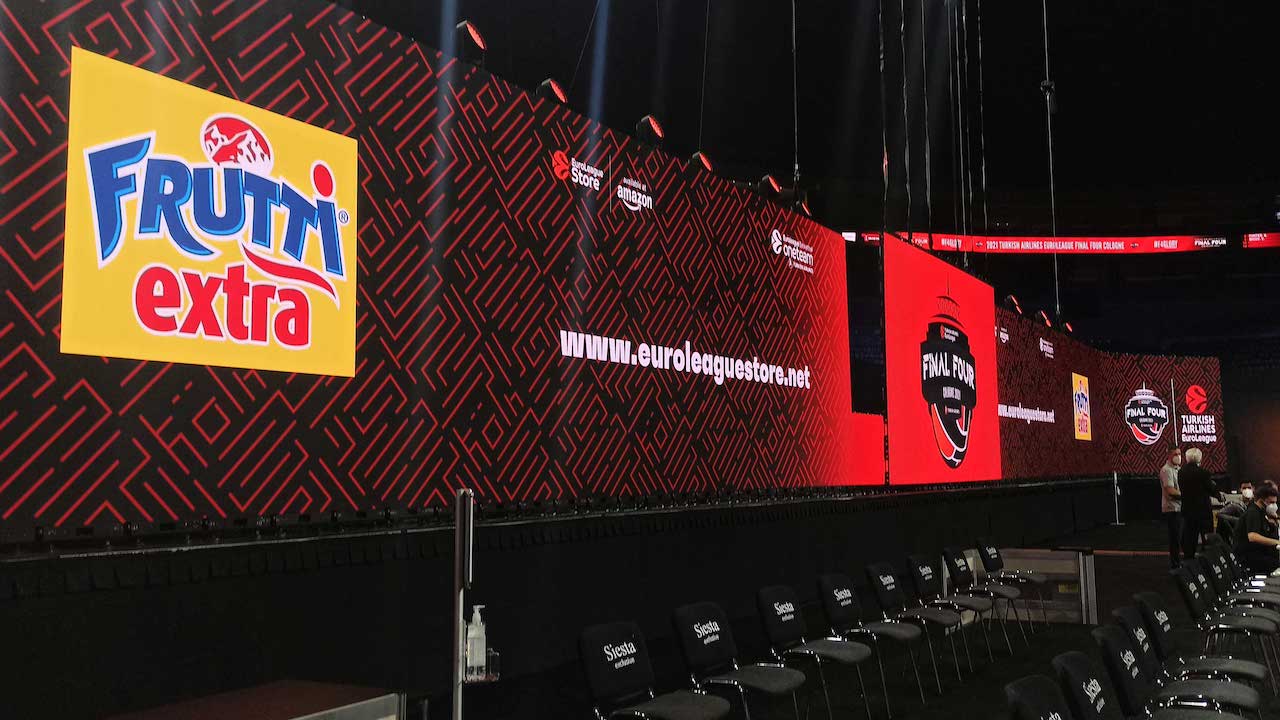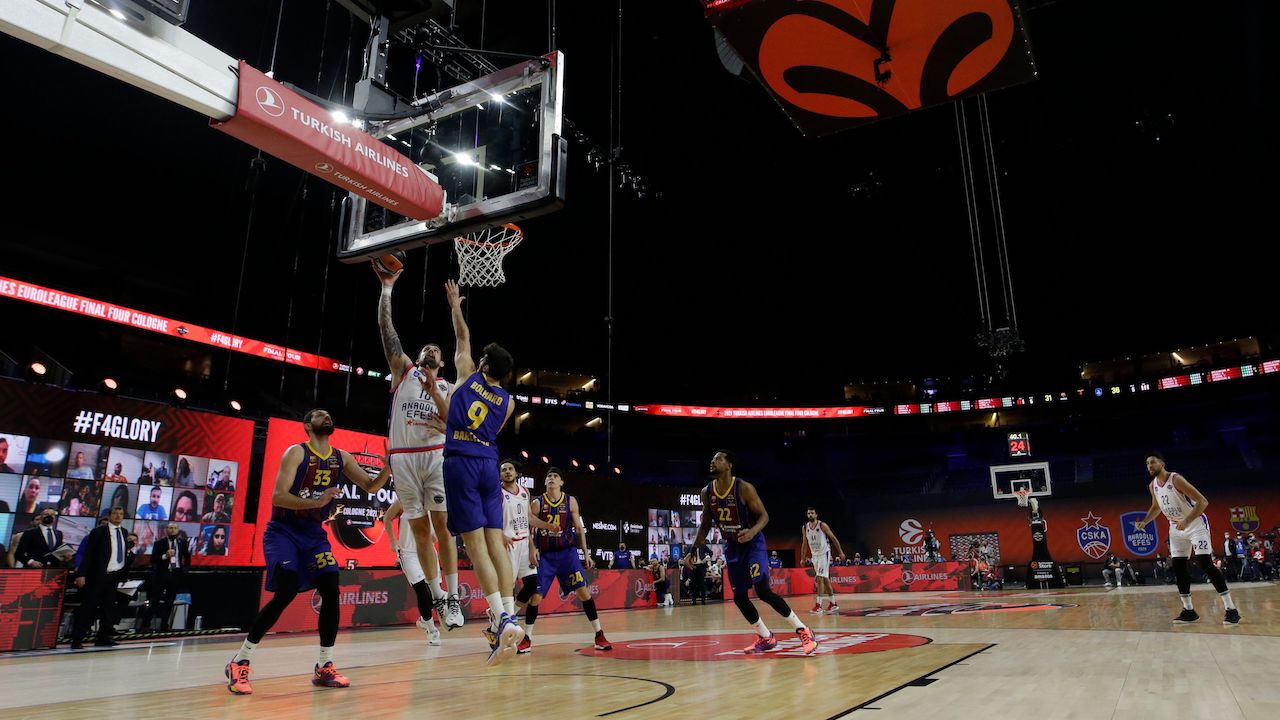Held in Cologne, Germany, the Final Four of the EuroLeague, the top-tier European professional basketball club competition, deployed a number of LED displays with show control by the new Christie Pandoras Box Version 8 with video processing by Christie Spyder X80.
Spanish company Laser AV was commissioned with the integration and technical execution of the AV for the event held at Lanxess Arena, which included live broadcasting, signal distribution throughout the stadium, signal management of the screens, and signal relay via fiber optic.
[Christie Launches Core Series II LED Video Wall Tiles]
The centerpiece of the installation was an LED video wall measuring 44 x 3.5 meters (144 x 11.5 feet) made up of 640 panels with a pixel pitch of 2.97mm, giving a total resolution of 14,784x1176 pixels.
Laser AV installed a 6 x 3.5 meter (19.7 x 11.5 feet) LED display, which was suspended in front of the massive video wall while the scoreboard was a LED cube with each face measuring 6 x 3 meters (19.7 x 9.8 feet) with a resolution of 1536x768 per side. The company also installed 50 LCD monitors, ranging between 43 and 80 inches, throughout the stadium including changing rooms and the press room.
In addition, the Lanxess Arena had a media cube, hung above the scoreboard, comprised of four 8 x 4.5 meter (26 x 14.8 feet) screens with a resolution of 1920x1080, and a fascia LED screen with a resolution of 3840x2160 that lined the whole perimeter of the stadium.
To control the displays, Laser AV employed 12 Software Licenses, four Pandoras Box Servers, two Widget Designer Pro, and a Christie Spyder X80 multi-window processor.

It was the Spyder X80 that, in the words of Unai Sánchez, chief technical engineer at Laser AV, was “the heart of the installation,” from which the Pandoras Box Servers as well as the Zoom and broadcast signals were managed and integrated. “We chose the Spyder X80 for this event because we had to manage lots of screens simultaneously and to visualize all the inputs easily and securely,” Sánchez explained.
He went on to add that: “In an event of this kind, it is absolutely essential to be able to configure such an extensive canvas with virtually no restrictions, and that is precisely what the Spyder X80 lets you do. To give you an idea, for the 44-meter screen we only needed to use two 7392x1176 outputs, and the same goes for the server inputs. That meant we had more available inputs and outputs, and we were able to manage the whole event simply and with perfect adjustment. The performance of the Spyder X80 was flawless, and gave us the stability, flexibility, and security we were looking for.”
Regarding Pandoras Box, Sánchez said, “Given that it was a sporting event, you couldn’t program a fixed timeline. The client programmed events that varied depending on the quarter and on down times. Thanks to the conditional programming, we were able to configure actions that depended on variables that we could resolve in real time. Pandoras Box Version 8 conditional programming makes even the most complicated events much easier.”
This was the first time that the Laser AV team had used the new Pandoras Box Version 8. “We have been using Pandoras Box for over ten years now and I can safely say that this is the most powerful version yet and the one with the most features,” Sánchez said. “And, as always, its best virtues are its reliability and flexibility.
“The possibility of using virtual cameras is amazing. You can create a composition anywhere on the canvas and integrate it as an extra layer in another more complex composition.”
Sánchez also had positive things to say about other features of Pandoras Box Version 8: “It allows any CPU to have unlimited layers, as well as a total 3D environment, ingestion of files over 4K, and unprecedented, improved performance. The Laser AV team tested how many videos with a 14784x1176 (25fps hap) resolution you could run and the surprise was that we were able to have 10 videos playing at once, which was impossible with Version 6. In short, it has no limits in terms of resolution and number of layers. With regard to workflow, it is still as intuitive and flexible as ever, but it has eliminated license restrictions. To be honest, we weren’t able to spot any flaws or shortcomings.”
